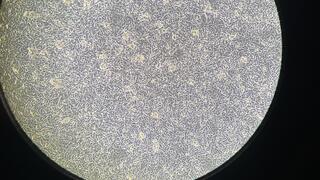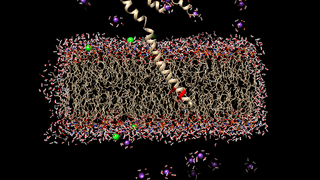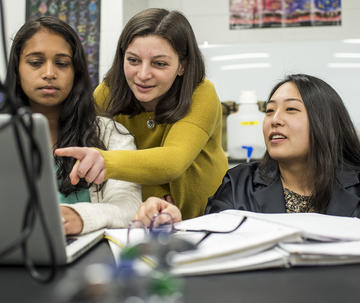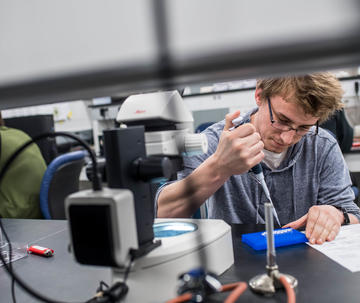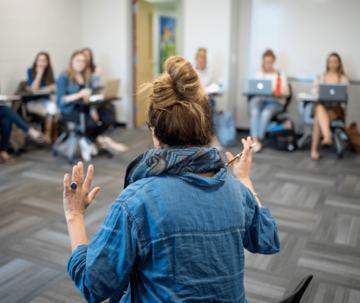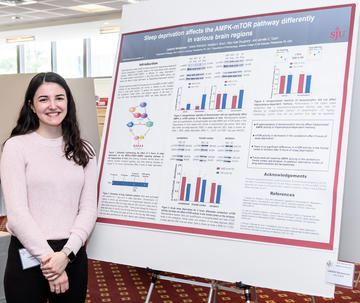Saint Joseph's University Center for Undergraduate Research
The Center for Undergraduate Research promotes investigations in all academic disciplines and cultivates a passion for independent discovery by equipping students for the challenges of the future in any career or educational situation. The Center supports high-quality research and creative activities that engages students through inquiry-based learning to advance the Saint Joseph’s University's educational mission.
The SJU Images of Research & Scholarship Contest Is Now Open for 2025-2026
The SJU Images of Research & Scholarship Exhibit is a multidisciplinary, exhibit/competition celebrating the diversity and breadth of undergraduate student research. Undergraduates in any major or discipline and at any stage of research are invited to submit abstract entries consisting of a high-resolution image (graph, photograph, schematic, microscope image), or 3D form (sculpture/3D printout) that relates to their research or creative/scholarly work. Research work need not be fully completed. Freshmen and sophomores beginning research with a faculty mentor are encouraged to present!
Submissions are automatically posted on the SJU CUR website and on social media later in the spring. Entries are entered in competition for the Most Popular Choice (based on Instagram votes to start in March 2026) and for Best Images (based on SJU Faculty votes).
Images of Research and Scholarship 2025-2026 Entries
Images of Research & Scholarship Previous Exhibits
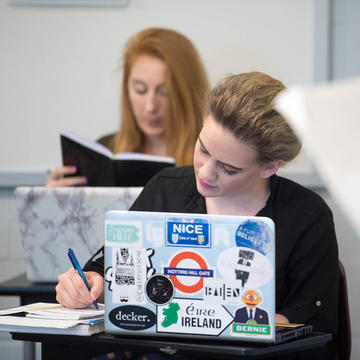
What is Undergraduate Research and Why is it Important ?
From the Council of Undergraduate Research: Undergraduate research, scholarship, and creative inquiry is fundamentally a pedagogical approach to teaching and learning. With an emphasis on process, the Council defines undergraduate research as: A mentored investigation or creative inquiry conducted by undergraduates that seeks to make a scholarly or artistic contribution to knowledge.
Undergraduate research, scholarship, and creative inquiry enriches undergraduate education and helps students achieve their academic and career goals through the critical skills they gain and sharpen through these experiences.
